USNIC ACID
- CAS NO.:125-46-2
- Empirical Formula: C18H16O7
- Molecular Weight: 344.32
- MDL number: MFCD00065294
- EINECS: 204-740-7
- SAFETY DATA SHEET (SDS)
- Update Date: 2024-12-18 14:15:30
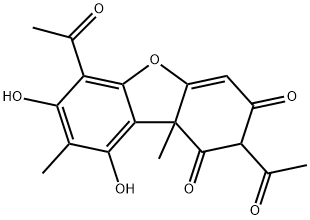
What is USNIC ACID?
Description
Usnic acid is a natural antibacterial compound found in lichens. It is not a carboxylic acid; instead, it gets acidity from the phenolic hydroxyl groups. Its pKa is 4.4.
In the 1840s, German and Austrian scientists isolated yellow-colored usnic acid from several lichen genera, such as Usnea, from which it derives its name. The bitter-tasting acid exists naturally as its (R)- and (S)-enantiomers as well as the racemate. (R)-Usnic acid is shown in the 3-D image.
More than 90 years after its was isolated, usnic acid’s structure was elucidated by Frank H. Curd and Alexander Robertson* at the University of Liverpool (UK). In a long series of articles, these authors reported the structure and laboratory synthesis of usnic acid and many of its derivatives.
As shown in the hazard information table, usnic acid is hazardous to health and the environment. Nevertheless, it is an ingredient in some over-the-counter dietary supplements. The Memorial Sloan Kettering Cancer Center, among other reputable organizations, warns against using it.
Even with its hazards, usnic acid is being studied for medical applications, especially in cancer research. In 2012, Helga M. Ogmundsdottir and colleagues at the University of Iceland (Reykjavik) reported that it affects mitochondrial and lysosomal function in cancer cells and has “implications for therapeutic manipulation of autophagy and pH-determined drug distribution.”
More recently, in 2018, Wensheng Pan and co-workers at Zhejiang University and People’s Hospital of Hangzhou Medical College (both in Hangzhou, China) found that usnic acid induces cycle arrest, apoptosis, and autophagy in gastric cancer cells.
Chemical properties
Crystalline, yellow solid. Insoluble in water; slightly soluble in alcohol and ether.
The Uses of USNIC ACID
Usnic acid is a major metabolite from a number of lichen and fungal species and is perhaps one of the longest known microbial metabolites, first isolated in 1844. Usnic acid exhibits a broad range of biological activity, indeed it is easier to list the bioassays in which it does not exhibit activity. More often than not, potency is low and of limited value. Usnic acid is an important metabolite for dereplication in discovery research programs.
The Uses of USNIC ACID
antibacterial
The Uses of USNIC ACID
Usnic acid is an enzyme inhibiting antitumor agent.
What are the applications of Application
Usnic acid is an enzyme inhibiting antitumor agent
Definition
ChEBI: A member of the class of dibenzofurans that is dibenzo[b,d]furan-1(9bH)-one substituted by acetyl groups at positions 2 and 6, hydroxy groups at positions 3 and 7 and methyl groups at positions 8 and 9b.
Contact allergens
Usnic acid is a component of lichens, also used as a topical antibiotic. Allergic contact dermatitis from lichens occurs mainly occupationally in forestry and horticultural workers, and in lichen pickers.
Purification Methods
This very weak acid is the natural form which is recrystallised from Me2CO, MeOH or *C6H6. At 25o it is soluble in H2O (<0.01%), Me2CO (0.77%), EtOAc (0.88%), MeOCH2CH2OH (0.22%) and furfural (7.32%). [Curd & Robertson J Chem Soc 894 1937, Barton & Brunn J Chem Soc 603 1953, resolution: Dean et al. J Chem Soc 1250 1953, synthesis: Barton et al. J Chem Soc 538 1956, Beilstein 18/5 V 586.]
Properties of USNIC ACID
| Melting point: | 200°C |
| Boiling point: | 399.43°C (rough estimate) |
| alpha | D16 +509.4° (c = 0.697 in chloroform) |
| Density | 1.2869 (rough estimate) |
| refractive index | 495 ° (C=0.7, CHCl3) |
| storage temp. | under inert gas (nitrogen or Argon) at 2-8°C |
| solubility | ≈1 g/l |
| solubility | DMF:2.5(Max Conc. mg/mL);7.26(Max Conc. mM) |
| form | A crystalline solid |
| pka | 4.00±0.40(Predicted) |
| appearance | yellow crystals or powder |
| color | White to yellow |
| Merck | 9893 |
| CAS DataBase Reference | 125-46-2(CAS DataBase Reference) |
| EPA Substance Registry System | Usnic acid (125-46-2) |
Safety information for USNIC ACID
| Signal word | Warning |
| Pictogram(s) |
 Exclamation Mark Irritant GHS07 |
| GHS Hazard Statements |
H302:Acute toxicity,oral H335:Specific target organ toxicity, single exposure;Respiratory tract irritation |
| Precautionary Statement Codes |
P261:Avoid breathing dust/fume/gas/mist/vapours/spray. |
Computed Descriptors for USNIC ACID
New Products
(S)-3-Aminobutanenitrile hydrochloride 4-Methylphenylacetic acid N-Boc-D-alaninol N-BOC-D/L-ALANINOL Tert-butyl bis(2-chloroethyl)carbamate 3-Morpholino-1-(4-nitrophenyl)-5,6-dihydropyridin- 2(1H)-one Furan-2,5-Dicarboxylic Acid Tropic acid 1-Bromo-3,5-Di-Tert-Butylbenzene S-2-CHLORO PROPIONIC ACID ETHYL ISOCYANOACETATE 2-Bromo-1,3-Bis(Dimethylamino)Trimethinium Hexafluorophosphate 4-IODO BENZOIC ACID 3-NITRO-2-METHYL ANILINE 1-(2,4-DICHLOROPHENYL) ETHANAMINE (2-Hydroxyphenyl)acetonitrile 4-Bromopyrazole 2-(Cyanocyclohexyl)acetic acid 4-methoxy-3,5-dinitropyridine 1-(4-(aminomethyl)benzyl)urea hydrochloride 2-aminopropyl benzoate hydrochloride diethyl 2-(2-((tertbutoxycarbonyl)amino) ethyl)malonate tert-butyl 4- (ureidomethyl)benzylcarbamate Ethyl-2-chloro((4-methoxyphenyl)hydrazono)acetateRelated products of tetrahydrofuran
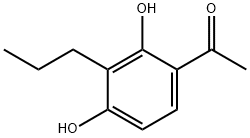
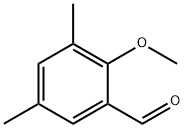
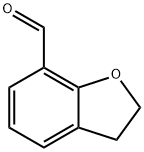

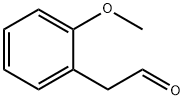
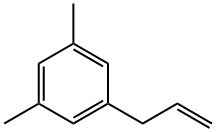

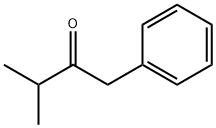
You may like
-
 Usnic acid 98% (HPLC) CAS 125-46-2View Details
Usnic acid 98% (HPLC) CAS 125-46-2View Details
125-46-2 -
 Usnic acid 96% CAS 125-46-2View Details
Usnic acid 96% CAS 125-46-2View Details
125-46-2 -
 1975-50-4 98%View Details
1975-50-4 98%View Details
1975-50-4 -
 2-HYDROXY BENZYL ALCOHOL 98%View Details
2-HYDROXY BENZYL ALCOHOL 98%View Details
90-01-7 -
 2-Chloro-1,3-Bis(Dimethylamino)Trimethinium Hexafluorophosphate 221615-75-4 98%View Details
2-Chloro-1,3-Bis(Dimethylamino)Trimethinium Hexafluorophosphate 221615-75-4 98%View Details
221615-75-4 -
 61397-56-6 CIS BROMO BENZOATE 98%View Details
61397-56-6 CIS BROMO BENZOATE 98%View Details
61397-56-6 -
 14714-50-2 (2-Hydroxyphenyl)acetonitrile 98+View Details
14714-50-2 (2-Hydroxyphenyl)acetonitrile 98+View Details
14714-50-2 -
 118753-70-1 98+View Details
118753-70-1 98+View Details
118753-70-1